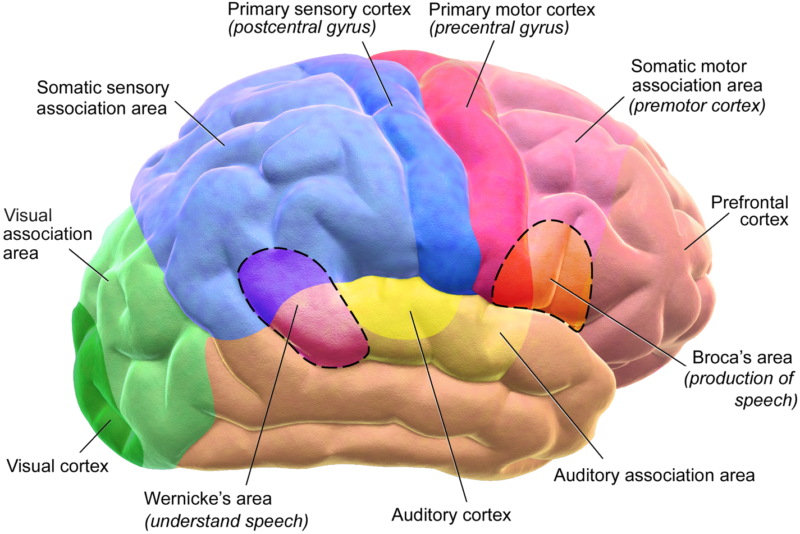This is the second of a two-part series on the neurobiology of self-defense. Part 1 focused on the fight/flight/freeze responses. This article will focus on the neurobiology of social interactions.
The Neurobiology of Social Interactions
Much of the following discussion is drawn from the field of interpersonal neurobiology. A list of authors is included at the end of the article, if you’re interested in learning more about this fascinating topic.
There are really two related concepts when thinking about what’s going on neurologically with social interactions, and how they influence our safety: implicit memory and the idea of interpersonal integration and resonance circuits, and how they operate to create emotional contagion.
Implicit Memory
Implicit memory, also called “procedural memory” or “body memory” is the memory of how to do things. If you have any sort of regular physical practice, whether it’s baseball, dance, or karate, you know that after a while movements become automatic. You no longer have to think about them consciously to do them, and indeed, when you do think about them, it actually makes them harder to do.
Automatic reactions aren’t just physical, though. In fact, our implicit memories are the first kind of memories that are formed, and we can form implicit memories from birth, long before we have autobiographical memories. So implicit memories very much inform our sense of ‘how the world works,’ and how to navigate the world and deal with other people. We talk a lot about listening to your instincts in self-defense. Instincts, of course, are just that – entirely automatic reactions to perceived danger. They’re behaviors that have been programmed into us, basically – we don’t have to learn them. But the ‘perceived danger’ comes from our implicit memories. All of our lives, we’ve been absorbing what signals mean ‘danger,’ and which mean ‘safety,’ and a part of our brain continuously scans the environment for signs of danger.
One unfortunate reality that stems from the role of implicit memory is that we all too often react in a biased way, even though we’re not biased in our rational minds – it’s called implicit bias, and you can read more about it here. And you and read more about instincts as they relate to self-defense in Part 1 of the Neurobiology of SD.
If you’ve ever mistakenly told your boss that you loved them, or said “you too” in a totally inappropriate context, you’ve experienced implicit memory at the verbal (which in this context means social) level. Similarly, when I teach classes I sometimes demonstrate this by handing someone a pen. Then I ask them why they took the pen. Sometimes they answer (“because I really want to hit things!” is my favorite response so far) but the truth is that it’s an automatic reaction – it’s part of our implicit memory. And most of the time, if someone asks you a question, you’ll give them an answer. That answer might not be the one they want, but it’s automatic for us to respond to questions; to be drawn into conversations – to engage socially with those around us. Even our complex social behavior is largely a product of our implicit memory. We know this instinctively. We might say it’s “how we were raised.” Throughout our childhood, we learned – both through observation and through our own social experiences – what appropriate social behavior is. Maybe our parents told us, “answer the question,” or “he wants to shake your hand!” – but at some point, the responses became ingrained; they became part of our implicit memory.
So what? What does this have to do with self-defense? Well, if we can recognize these automatic reactions, we can be more aware when they’re being used against us. Gavin DeBecker lists several tactics in his book The Gift of Fear: Forced Teaming, Typecasting, and Loan Sharking (he lists others, but these are the ones that deal most overtly with implicit memory). Forced Teaming puts us unwillingly on a ‘team’ with the assailant, so that you’ll feel affiliated with them. Typecasting is when an assailant gives you a negative label so that you’ll disprove it (the example he uses is “you’re probably too snobbish to talk to the likes of me.”) And Loan Sharking is when someone does you a favor (for example, carries your groceries) so that you’ll feel indebted to them (De Becker, 1997, pp 56-62).
When we teach self-defense, one of our exercises is called “The Broken Record.” In partnerships, one person asks for a relatively innocuous favor, and the other can only say, “No,” or “I just don’t want to.” The favor-asking partner is instructed to use everything they can think of (including Typecasting and Loan Sharking) to get their partner to say yes, or to give an explanation or excuse. The purpose of the exercise is to both give people practice with saying ‘no’ without engaging in conversations, and to help them recognize the tactics that they are especially vulnerable to.
Interpersonal Integration & Emotional Contagion
Implicit memory is pretty well understood, but the next topic, interpersonal integration, is less so. Researchers have been observing it for decades, so there’s a lot of theory behind it. However, the actual neural mechanisms are only just beginning to be understood. So read the following explanation with a grain of salt: some of it is well-accepted, and some of it is still controversial.
One example of this is the discovery of mirror neurons. These have been embraced wholeheartedly by scholars and researchers in the field of interpersonal neurology, since they explain so well a mechanism that they have been observing and writing about for a long time (going back to John Bowlby in the late 1940s).
All of that said, here’s a quick explanation of mirror neurons: If we decide to raise an arm, neurons fire to direct our arm to raise. When we watch someone else raise their arm, some of our same arm-raising neurons also fire, even though we’re just watching the action. Those are mirror neurons.
Interpersonal neurobiologists believe this to be the seat of empathy – that mirror neurons, along with a complex set of mechanisms that researcher Dan Siegel calls resonance circuits, help us understand other people’s emotional states, based on subtle cues of facial expression and body language (what we call nonverbal communication). The theory is that we are hard-wired to develop this understanding, and that it’s the way the bond (called an attachment bond) forms between primary caregivers and infants. If you’ve ever worked with young children, you probably know that if they fall down, they’ll look to you, and if you don’t seem concerned, they’ll be fine, but if you are visibly upset, they’ll start crying. This is a classic example of the child not entirely knowing what to feel until they get some feedback.
The key point here is that we understand how others are feeling by, to some extent, feeling it ourselves. Therapists, who are trained in empathy, learn that when they’re having a feeling that they don’t understand, it’s often coming from their client. Like intuition, it can seem like magic, but the more we learn about the brain, the more we realize that it’s a mechanical and electrical process. The mechanisms are nonconscious, but that doesn’t mean they can’t be measured. It’s just that our tools for measuring brain activity are still pretty crude.
In the early to mid-1990s, Elaine Hatfield described the phenomenon of emotional contagion (the tendency to ‘catch’ others’ emotions), and theorized that it was accomplished through the subtle mimicry of facial expressions and body postures. Given the above explanation of the role of mirror neurons and resonance circuits, we can now see how this might work neurobiologically.
One way this is relevant to self-defense is in the process of de-escalation. When someone gets escalated enough, their thinking (verbal) brain goes offline and their ‘ancient brain’ takes over (this is covered in more depth in Part 1). So our communication with them is going to be by necessity nonverbal, since they’re not in a state where they can understand verbal communication. We tell our students to make sure they themselves are calm, because we know that their body language (and thus their emotional state) may be mimicked by the escalated person. And we encourage them to try to connect, because that human connection is essential for the emotional contagion effect to work. The relationship doesn’t have to be close, but it’s important to establish some sort of brain-to-brain communication so that the mechanisms can be triggered.
We can also see the way this mechanism can be used against us – which is why we help our students practice resisting the implicit memory to automatically engage with people who may mean them harm. It’s not that we want them to be socially isolated – far from it – but to the extent we can all choose to engage with people in our environment more mindfully, the more likely it becomes that we’ll notice when someone is behaving unsafely.
Further Reading
If you’re interested in learning more about interpersonal neurobiology, I recommend looking into these researchers and authors:
For a more skeptical view of mirror neurons, check out this article from Wired.
And of course, The Gift of Fear by Gavin De Becker is a great self-defense resource, even though it doesn’t have a neurobiological lens.
Content provided by Women Belong member Amy Jones











































 Introductions - Members Only
Introductions - Members Only Unleash Your Marketing Swagger: Crafting an Authentic Strategy for Customer Engagement
Unleash Your Marketing Swagger: Crafting an Authentic Strategy for Customer Engagement Women Belong Book Club
Women Belong Book Club Women Belong Book Club
Women Belong Book Club Harnessing AI to Boost Your Social Selling
Harnessing AI to Boost Your Social Selling